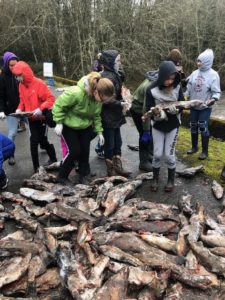 I went to school in Montana. If you asked my 10-year-old self what a fry was, I would have answered a tasty form of potato; I wouldn’t have been able to name a single species of Pacific salmon; and I certainly was unaware of their spawn and die life cycle. Not so with the young students of western Washington!
I went to school in Montana. If you asked my 10-year-old self what a fry was, I would have answered a tasty form of potato; I wouldn’t have been able to name a single species of Pacific salmon; and I certainly was unaware of their spawn and die life cycle. Not so with the young students of western Washington!
While teaching students across the Nisqually watershed about salmon ecology, I found myself impressed with how much they already knew. Salmon are so central to life here in the Pacific Northwest, they permeate every aspect of life, including public education. But for many of these students, it seemed as though salmon were more of a concept than a physical entity. They may know Chinook salmon by name and by photograph, but knowing them in the flesh (smell and all!) is something completely different.
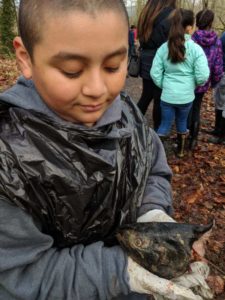 Salmon populations are significantly lower than they were before the industrial revolution. Estuary development, fresh and saltwater habitat degradation, construction of dams with inadequate fish passages, and overfishing have led to major salmon declines in the Pacific Northwest, prompting Chinook salmon and Steelhead to be listed as threatened on the Endangered Species List. Our salmon tossing field trips are aimed at improving salmon habitat for wild fish: more carcasses in streams means more food for aquatic insects and juvenile salmon, and healthier riparian plants that improve salmon habitat. Salmon are considered a keystone species, a species that affects the health of the whole ecosystem. 137 vertebrates–from osprey to black bears to orcas and more–consume salmon in some form.
Salmon populations are significantly lower than they were before the industrial revolution. Estuary development, fresh and saltwater habitat degradation, construction of dams with inadequate fish passages, and overfishing have led to major salmon declines in the Pacific Northwest, prompting Chinook salmon and Steelhead to be listed as threatened on the Endangered Species List. Our salmon tossing field trips are aimed at improving salmon habitat for wild fish: more carcasses in streams means more food for aquatic insects and juvenile salmon, and healthier riparian plants that improve salmon habitat. Salmon are considered a keystone species, a species that affects the health of the whole ecosystem. 137 vertebrates–from osprey to black bears to orcas and more–consume salmon in some form.
The salmon we use come from the Nisqually Indian Tribe’s Clear Creek Hatchery, where their eggs and milt are collected when they return in the fall to produce more salmon. Rather than dispose of the salmon carcasses as a waste product, they are frozen for preservation and to kill any parasites, and used for our salmon tossing field trips in late December and January. 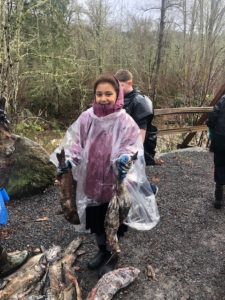
This year, seven teachers from five schools, and one public volunteer group, ventured out to sites along the Nisqually and Mashell Rivers to watch as their students excitedly tossed hundreds of salmon carcasses into the water. The trips also allowed time for the students’ personal exploration: pausing mid-toss to watch a bald eagle soar overhead at Eatonville’s Smallwood Park; investigating the innards of a female salmon and instigating an impromptu dissection; noting the presence of snowberry, a familiar riparian plant from their tree planting trips.
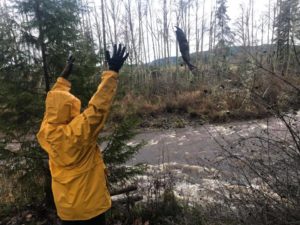 Though I knew little about salmon as a young student, they have become a great passion of mine, and sharing that passion with students in the watershed has been one of the most rewarding parts of my position with NREP. By establishing a relationship–not just a knowledge base–between students and salmon through experiences like this, hopefully we can work towards conserving and recovering these species so important to us all in the Pacific Northwest.
Though I knew little about salmon as a young student, they have become a great passion of mine, and sharing that passion with students in the watershed has been one of the most rewarding parts of my position with NREP. By establishing a relationship–not just a knowledge base–between students and salmon through experiences like this, hopefully we can work towards conserving and recovering these species so important to us all in the Pacific Northwest.
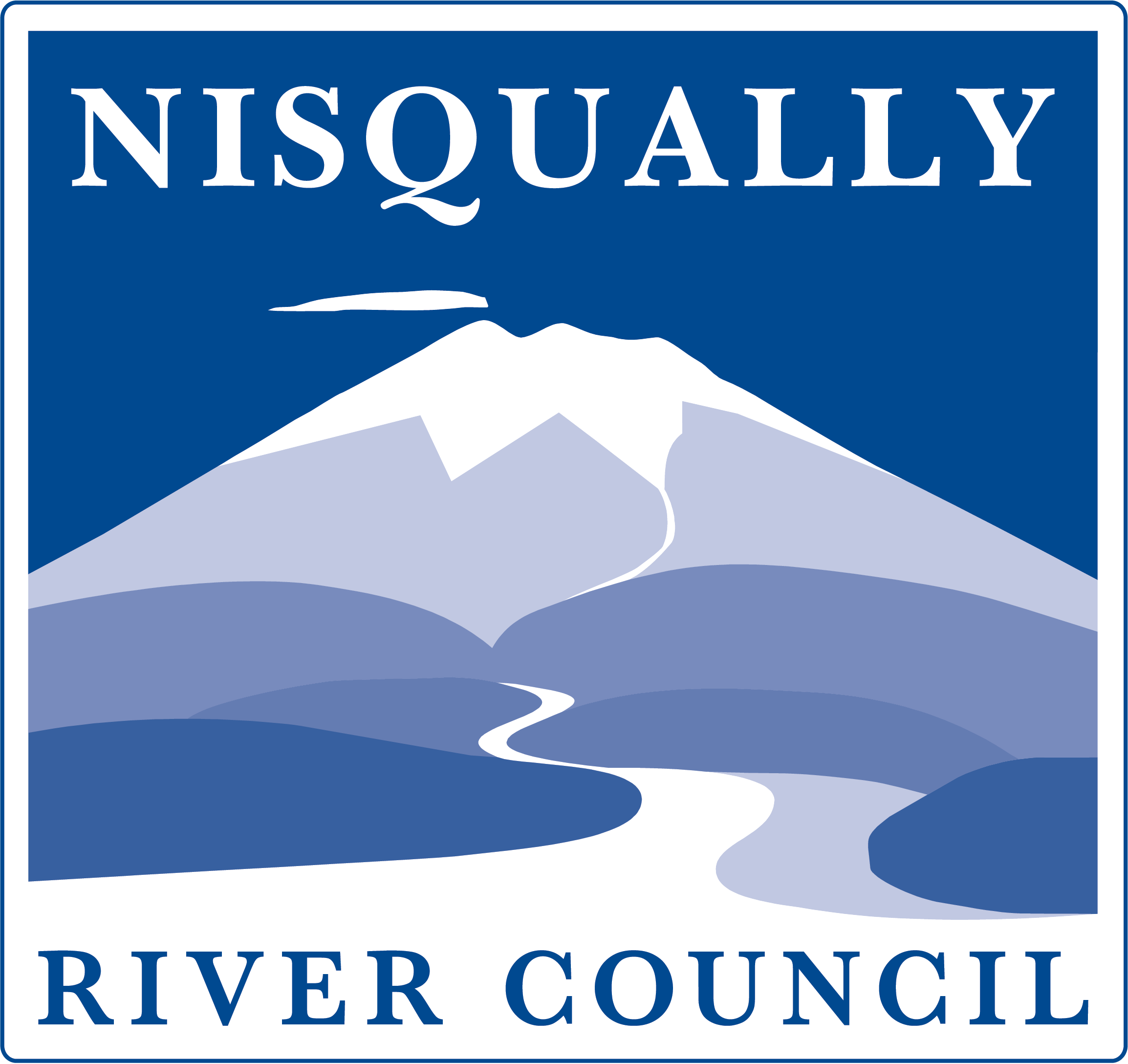

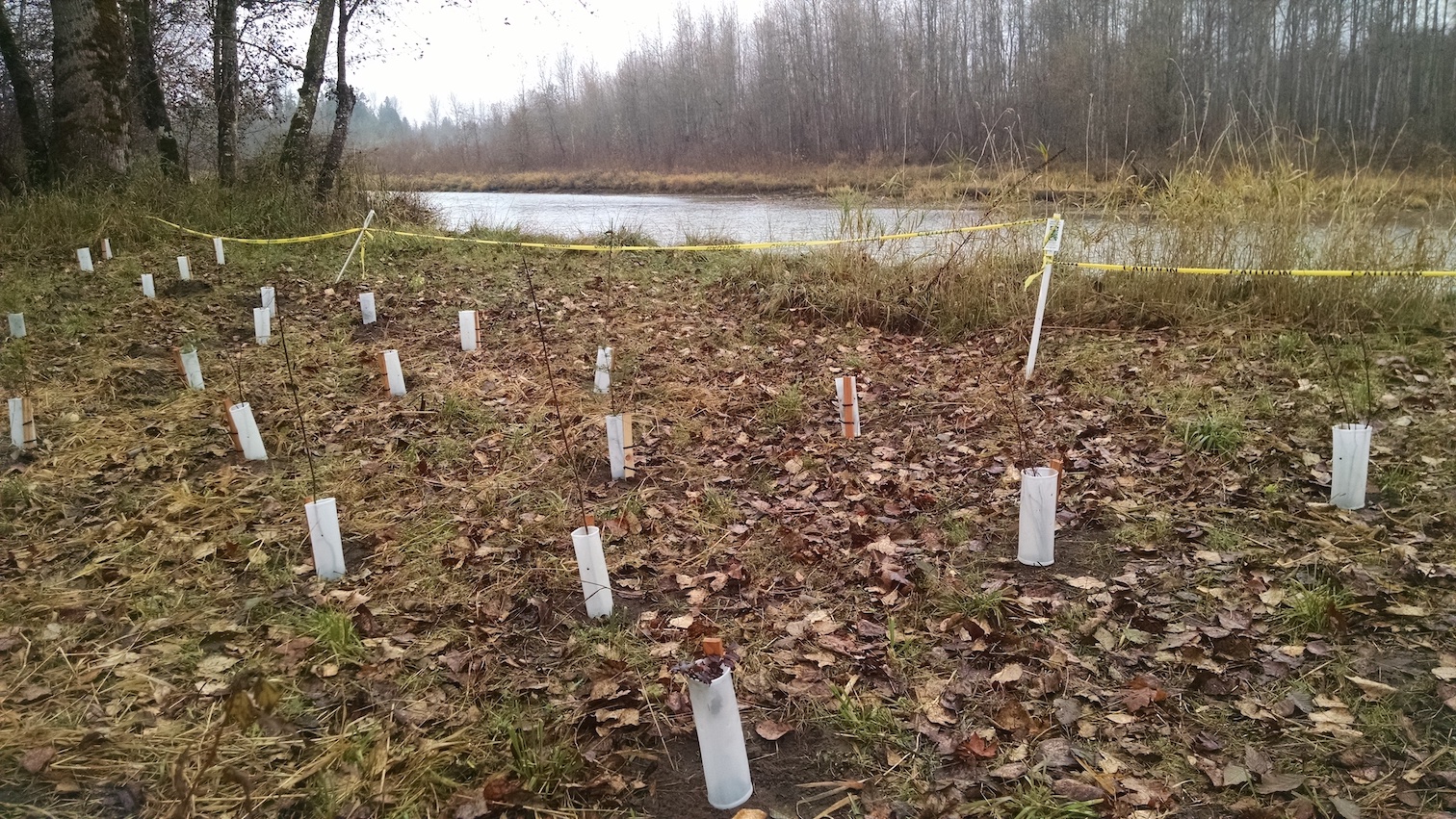

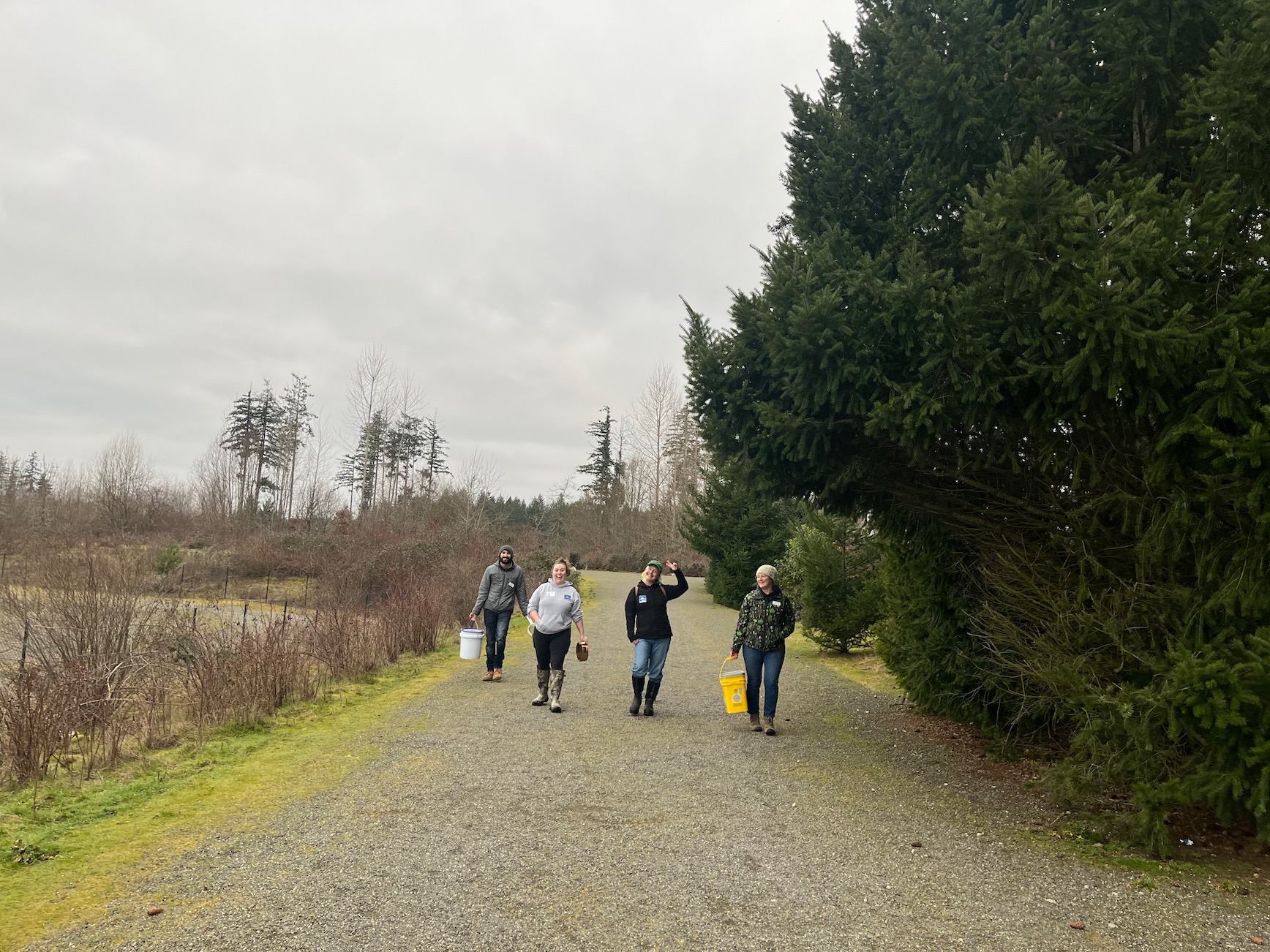
One thought on “Salmon Tossing: Conservation through Experience”
Chrissy, what an enlightening article. Superb writing!